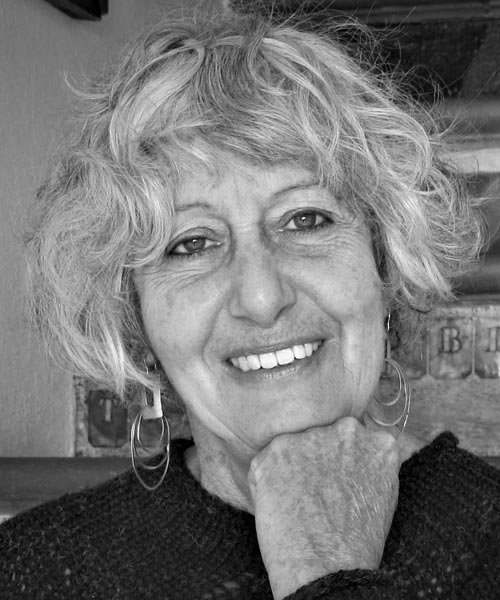
Shen Series - Course 1
by Elisa Rossi
To try to give some meaning to conditions that may appear confused and confusing, some help to whom is suffering. Both when emotional discomfort shows itself clearly and when it expresses somatically as pain, oppression, swelling, fatigue, insomnia…
Shen Series - Course 1
Course Overview
Elisa Rossi is a practicing acupuncturist of 40 years as well as an MD and Jungian Psychotherapist, with a PhD in Clinical Psychology. Having spent 3 months in China in 1983 researching for shen-hun-po, and subsequently publishing her book “Shen” in 2002, it is clear to Elisa that her interest is in the internal side of human being. And Chinese Medicine is an incredible tool to look at these forces, and to do something about their disorders. It can give some meaning to conditions that may appear confused and confusing, some help to whom is suffering.Some patients speak directly of anxiety or depression, while others express their emotional discomfort through pain, chest oppression, abdominal swelling, fatigue, insomnia, etc. There are times when the “emotional illness” shows itself clearly, others in which it seeps inside in even more alarming ways. Using acupuncture we do not to have to separate emotional and somatic levels.
This introduction about shen and the 4 courses that spring from it are based on careful reference to the Classics, so to be able to be creative and effective in our daily practice.
Clinical cases are discussed all along, with their doubts and failures, so to connect to real experience.
Contents: meaning of shen, hun, po and use in our practice; the role of emotions and how to recognize them; “psycho-emotional” diagnostic patterns and treatment guidelines; “psycho-emotional” classical signs and syndromes. Complete and clear handouts.
Course Objectives
- An introductory exploration of: shen, hun, po in the classics
- An introductory exploration of: reference to hun and po in clinical disorders
- An introductory exploration of: the role of emotions and how to recognize them in the patient and in the therapeutic relationship
Course Outline
0 hrs - 15 minShen, hun, and po in the classics.
15 min - 45 minReference to hun and po in clinical disorders.
45 min - 1 hrsThe role of emotions and how to recognize them in the patient and in the therapeutic relationship.
Teacher

In 1983, after a 3-year Course in Acupuncture in Milan, Elisa attended the Training Course of TCM in Beijing. She went back to China 7 more times gaining clinical experience in the TCM Departments of Beijing, Nanjing, Shanghai, Jinan.
More...
SHEN is a very important aspect of our overall yin yang balance and well-being and in my opinion TCM approach is amazing. However, not very many practitioners especially outside of our practice know about the strength of TCM in mental health contribution. These type of course may certainly open doors.SHAHRAM A.Canada
This course on the “Shen” is well developed and delivered. It is thought provoking and quite valuable for helping people in the world today.Mary B.United States of America
An excellent presentation with a mix of classical and modern approaches laid out in a clear and logical way. This is a must-do course for those interested in mental health.Shaun D.United Kingdom
This is a great introduction to shen-hun-po and the importance of the seven emotions in somatic-emotional-mental manifestations. Elisa Rossi conveys both understanding of classical Chinese philosophy and experience of modern clinical practice.Nicola B.Canada
Very in-depth and informative course, and she has a wonderful way of conveying this important knowledge.Victoria A.United States of America
Teacher was very knowledgeable, a fascinating course at looking at movement of Qi along with manifestations of diseases according to disruption of Qi due to emotions. KIRA B.Canada
The Classics say that we should attend to the Spirit/ Shen first when treating a patient yet there are few courses offered on this subject (speaking from a graduate of a TCM college). The instructor is with her background in acupuncture, psychiatry, and Jungian psychology is most qualified to teach about Shen and her teachings are rooted in the classics. Joseph S.United States of America
The instructor has a vast expanse of knowledge in this area and shared a lot in this introductory course. I am looking forward to learning more.Steven S.United States of America
I'd like to highly recommentd this course to my colleagues. The introduction alone draws you in and offers insight into the movement of Qi, knowledge informed by the Classics of Chinese philosphy; completely relevent to contemporary practice. Susan M.Australia
I feel fortunate to be able to be so close to Masters through the means of online learning.Roxy W.Australia
The teacher depth of knowledge is outstanding. Khalil B.Australia
A very clear introduction to depth psychology. As a licensed mental health counselor we studied aspects of this in object relations but it was not explicated as well as this introductory couse. Teresa B.United States of America
Shen Series - Course 1
An Introduction: Classic and Contemporary Approach to Psycho-emotional Disorders
by Elisa RossiShen Series - Course 1
Course Overview
Elisa Rossi is a practicing acupuncturist of 40 years as well as an MD and Jungian Psychotherapist, with a PhD in Clinical Psychology. Having spent 3 months in China in 1983 researching for shen-hun-po, and subsequently publishing her book “Shen” in 2002, it is clear to Elisa that her interest is in the internal side of human being. And Chinese Medicine is an incredible tool to look at these forces, and to do something about their disorders. It can give some meaning to conditions that may appear confused and confusing, some help to whom is suffering.Some patients speak directly of anxiety or depression, while others express their emotional discomfort through pain, chest oppression, abdominal swelling, fatigue, insomnia, etc. There are times when the “emotional illness” shows itself clearly, others in which it seeps inside in even more alarming ways. Using acupuncture we do not to have to separate emotional and somatic levels.
This introduction about shen and the 4 courses that spring from it are based on careful reference to the Classics, so to be able to be creative and effective in our daily practice.
Clinical cases are discussed all along, with their doubts and failures, so to connect to real experience.
Contents: meaning of shen, hun, po and use in our practice; the role of emotions and how to recognize them; “psycho-emotional” diagnostic patterns and treatment guidelines; “psycho-emotional” classical signs and syndromes. Complete and clear handouts.
Course Objectives
- An introductory exploration of: shen, hun, po in the classics
- An introductory exploration of: reference to hun and po in clinical disorders
- An introductory exploration of: the role of emotions and how to recognize them in the patient and in the therapeutic relationship
Course Outline
0 hrs - 15 minShen, hun, and po in the classics.
15 min - 45 minReference to hun and po in clinical disorders.
45 min - 1 hrsThe role of emotions and how to recognize them in the patient and in the therapeutic relationship.
Teacher

More...
SHEN is a very important aspect of our overall yin yang balance and well-being and in my opinion TCM approach is amazing. However, not very many practitioners especially outside of our practice know about the strength of TCM in mental health contribution. These type of course may certainly open doors.SHAHRAM A.Canada
This course on the “Shen” is well developed and delivered. It is thought provoking and quite valuable for helping people in the world today.Mary B.United States of America
An excellent presentation with a mix of classical and modern approaches laid out in a clear and logical way. This is a must-do course for those interested in mental health.Shaun D.United Kingdom
This is a great introduction to shen-hun-po and the importance of the seven emotions in somatic-emotional-mental manifestations. Elisa Rossi conveys both understanding of classical Chinese philosophy and experience of modern clinical practice.Nicola B.Canada
Very in-depth and informative course, and she has a wonderful way of conveying this important knowledge.Victoria A.United States of America
Teacher was very knowledgeable, a fascinating course at looking at movement of Qi along with manifestations of diseases according to disruption of Qi due to emotions. KIRA B.Canada
The Classics say that we should attend to the Spirit/ Shen first when treating a patient yet there are few courses offered on this subject (speaking from a graduate of a TCM college). The instructor is with her background in acupuncture, psychiatry, and Jungian psychology is most qualified to teach about Shen and her teachings are rooted in the classics. Joseph S.United States of America
The instructor has a vast expanse of knowledge in this area and shared a lot in this introductory course. I am looking forward to learning more.Steven S.United States of America
I'd like to highly recommentd this course to my colleagues. The introduction alone draws you in and offers insight into the movement of Qi, knowledge informed by the Classics of Chinese philosphy; completely relevent to contemporary practice. Susan M.Australia
I feel fortunate to be able to be so close to Masters through the means of online learning.Roxy W.Australia
The teacher depth of knowledge is outstanding. Khalil B.Australia
A very clear introduction to depth psychology. As a licensed mental health counselor we studied aspects of this in object relations but it was not explicated as well as this introductory couse. Teresa B.United States of America
 English
English
 Français
Français
 Italiano
Italiano
 Español
Español
 Deutsch
Deutsch

 Schnelle Lieferung
Schnelle Lieferung